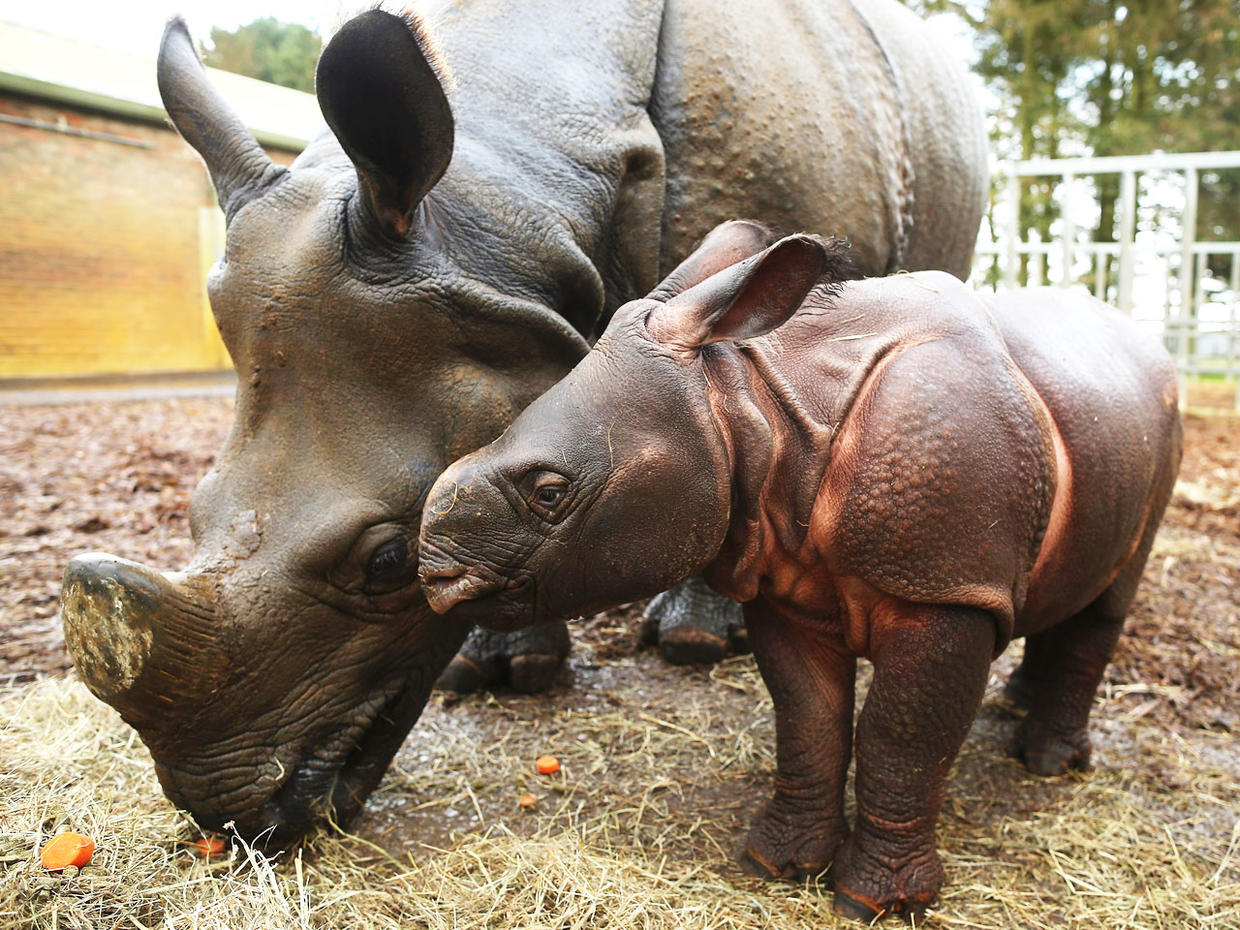

Before long, it will have moved on from its low-fat smoothies and embraced a 100% plant-based diet.
BABY RHINOCEROS HOW TO
It holds its head higher, allowing it to reach its favourite foods.ĭepending on species, the baby rhino’s mother will teach it how to feed on its preferred type of vegetation. Its distinctive, hooked lip helps it grasp and pull leaves and stalks from trees. As browsers, they favour plants, shoots, branches, and even thorny bushes like the Acacia tree.Īppearance-wise, the black rhino has its own adaptations that set it apart from its relative. It holds its large head close to the ground and hoovers up grass.īlack rhinos live in several southern and eastern African countries, and they spend more time in mixed grasslands and woodlands. As grazers, they eat grass and other low-lying vegetation.Īnother name for this species is the square-lipped rhinoceros, and you can see why. White rhinos mainly live on the open grasslands, or savannas, of southern Africa. Black and white rhinos, despite their similarities, have evolved to occupy very different niches. What a baby rhino eats, apart from milk (and poop!) depends on its species. They must munch on dung for a few months to properly prepare their gut for a lifetime of grazing or browsing. This switch in a baby rhino’s diet doesn’t happen overnight.

How do they get these bacteria? By eating their mother’s dung! Specifically, their digestive systems, which lack the bacteria to digest vegetation at birth. Therefore, producing calorie and nutrient-dense milk would be too much of a strain.īefore calves are fully weaned, they must prepare their bodies for their adult diet.

This could be because of the mother’s long lactation period – calves may continue to suckle for a year or more. Rhino milk is quite unusual in that it’s extremely low in fat. Like any mammal, a baby rhino needs its mother’s milk to grow big and strong. What do baby rhinos eat? Low-fat milk and poop How do they get so big? Well, this huge herbivore has an appetite to match. Male white rhinos average over two tonnes, and sometimes over three! By the time they’re fully grown, most African rhinos will exceed a tonne. A black rhino calf weighs around 35-50 kg, while the larger white rhino gives birth to a 40-65 kg baby.Ĭalves pack on size quickly, growing two or three kilograms per day in their early life. Mothers of both species give birth to a single calf, after a 15-month (black rhinos) or 16-month (white rhinos) gestation period. ‘Small’ is relative – baby rhinos are quite large at birth compared to most animals! Elephants are the only animals that pip white rhinos size-wise, but the crown for ‘cutest calf’ is still up for debate. Seeing a small rhino calf peek out from behind its mother, it’s hard to believe it will grow into one of the world’s largest land animals. That’s also the same as hippos, giraffes, and buffalo, so it shouldn’t be too hard to remember. A male rhino calf will grow up to be a bull, and a female will grow up to be a cow. What is a baby rhino called? The same thing as a baby elephant. Want to know what to call a baby rhino, what it eats, or when it grows its iconic horn? Get your fix of baby rhino facts below. But there are still challenges ahead, and its distinguishing feature puts it at risk from poachers. If a baby rhino survives its early years, it will grow into one of Africa’s largest and toughest animals, with a pair of magnificent horns. Whether you’re on a South African safari or exploring the Ngorongoro Crater, catching a glimpse of either species is always a privilege. They have their differences, but one similarity is their unreasonably cute offspring. Of the five living species of rhino, two call Africa home – the white rhinoceros and the black rhinoceros. Seeing one practicing its charge will put a smile on anyone’s face – unless its mother is following suit and heading in your direction! A baby rhino is surely one of Africa’s most adorable inhabitants.


 0 kommentar(er)
0 kommentar(er)
